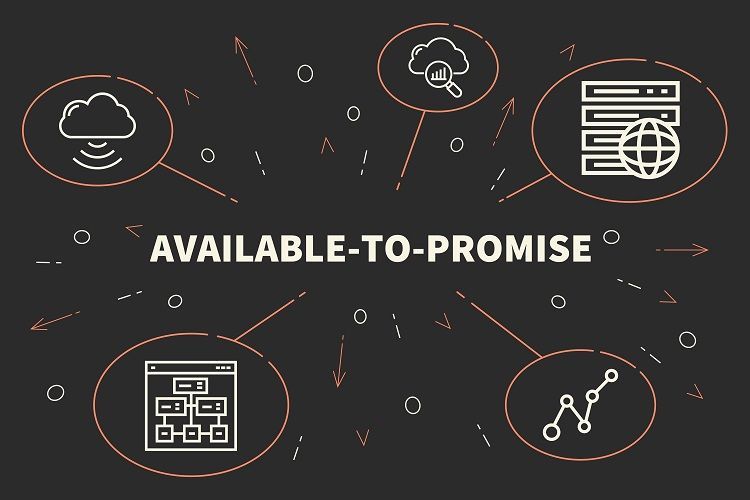Maximizing Repeat Customer Sales in the Apparel and Footwear Industry with ATP (Available to Promise)
In the fast-paced and highly competitive world of apparel and footwear businesses, customer satisfaction and loyalty are paramount to success. One key aspect that plays a crucial role in achieving customer success is the ability to provide accurate and reliable delivery promises. This is where ATP (Available to Promise) comes into play. ATP is a powerful tool that optimizes operations, enhances customer experience, and fosters repeat sales. Let's explore how ATP can revolutionize apparel and footwear businesses, streamline operations across the supply chain, and create a loyal customer base.
What is ATP?
Available to Promise (ATP) is a dynamic inventory management concept that determines the quantity of products available to fulfill customer orders at any given point in time. It takes into account real-time inventory levels, pending orders, production schedules, and supplier lead times to provide accurate delivery promises to customers.
The calculation of Available to Promise (ATP) involves considering several factors to determine the quantity of products available for fulfilling customer orders within a specific timeframe. While the specific methodology may vary depending on the ERP software or business processes, here is a general overview of how ATP is calculated:
- Beginning Inventory:
The calculation starts with the available inventory at the beginning of the calculation period. This includes the physical stock on hand or the quantity of finished goods available for immediate shipment.
- Incoming Supply:
The ATP calculation considers the anticipated supply of products during the specified timeframe. This includes pending purchase orders, manufacturing orders, or any other means of replenishing inventory.
- Outgoing Commitments:
The calculation deducts the quantity of products that have already been committed to fulfilling existing customer orders. This includes confirmed sales orders, backorders, and any other pending orders.
- Production Lead
Time: If there is a lead time associated with production or manufacturing, it is considered. The lead time represents the time required to convert raw materials or components into finished goods. This ensures that production requirements are factored into the calculation.
- Supplier Lead Time: If products are sourced from external suppliers, the lead time from suppliers is considered. This represents the time required for the supplier to deliver the requested products to the business.
- Allocation Rules:
ATP calculations may involve allocation rules based on specific criteria or priorities. For example, high-priority customers or orders may receive preferential allocation of available inventory.
- Order Fulfillment: The calculated ATP value represents the quantity of products available for new customer orders. It is the result of subtracting the outgoing commitments and pending orders from the beginning inventory and incoming supply, considering lead times and allocation rules for a fashion and apparel business.
Enhancing Customer Experience in the Apparel Industry
Accurate delivery promises play a vital role in customer relationships. By leveraging ATP, apparel and footwear businesses can provide customers with precise information regarding product availability and delivery dates. This transparency creates trust and instills confidence in customers, leading to increased satisfaction and repeat sales.
Streamlining Inventory Management
Having ATP functionality in fashion erp software optimizes inventory management by providing real-time visibility into stock levels, order statuses, and production schedules. By tracking inventory levels and factoring in pending orders, ATP ensures that apparel manufacturing and importing businesses can fulfill customer requests without overpromising or underdelivering. This results in efficient inventory control, reducing stockouts and excess inventory, ultimately saving costs and improving overall profitability.
Effective Production Planning
Apparel and footwear businesses often face the challenge of managing complex production processes involving various components, suppliers, and lead times across the fashion supply chain. ATP helps optimize production by considering both existing inventory and projected production capacity. This ensures that apparel companies can deliver products on time and avoid costly production delays.
Demand Forecasting and Order Management
ATP integrates seamlessly with demand forecasting systems, enabling apparel businesses to anticipate future demand and allocate inventory accordingly. By aligning inventory levels with anticipated demand, businesses can fulfill customer orders promptly across all sales channels, preventing shortages or long waiting times. This, in turn, fosters customer loyalty.
Personalization and Customer Engagement
ATP enables businesses to offer personalized experiences and engage with apparel industry customers effectively. By accessing real-time data on inventory availability, businesses can recommend alternative products or sizes to customers when their preferred choice is out of stock. This proactive approach shows customers that the business values their needs and is committed to finding suitable alternatives, enhancing customer gratification and loyalty.
Building Customer Trust and Partnership
Accurate delivery promises and consistent product availability build trust with customers. When customers have confidence in a business's ability to deliver on time, they are more likely to become repeat buyers and advocates for the brand. ATP facilitates this trust by ensuring that promises made at the time of purchase are fulfilled, creating a positive customer experience, and fostering long-term loyalty.
Seamless Omni-channel Experience
Today's customers expect a seamless shopping experience across multiple channels, including online, brick-and-mortar stores, and mobile apps. ATP enables apparel manufacturing, sourcing, and distributor businesses to integrate inventory and order management across these channels, providing customers with consistent information and reliable delivery promises. This omni-channel approach enhances customer convenience, encourages cross-channel sales, and strengthens brand loyalty.
Continuous Improvement and Adaptability
ATP provides valuable data and insights across the supply chain that enable businesses to monitor performance, identify bottlenecks, and make data-driven decisions for continuous improvement. By analyzing ATP metrics such as order fulfillment rates, lead times, and customer feedback, businesses can adapt their operations to optimize inventory management, streamline production, and meet customer expectations.
Apparel ERP (Enterprise Resource Planning) Software Can Help
In today's highly competitive apparel and fashion industry, delivering exceptional customer experiences is essential for sustained success. Available to Promise (ATP) is a prominent component among many key features in an erp for apparel and plays a crucial role in optimizing operations, enhancing customer relations, and promoting repeat sales and loyalty. By leveraging ATP in a fashion erp offering, businesses can provide accurate delivery promises, streamline inventory and supply chain management, optimize production, and engage customers effectively across multiple channels. The result is improved customer business, increased loyalty, and a strong competitive advantage in the dynamic apparel and footwear market. Embracing ATP management is a strategic move that enables businesses to thrive in an industry driven by customer-centricity and fosters long-term success.
The ABS fashion and apparel ERP software and warehouse management solution are designed to optimize business processes and customer loyalty by providing apparel industry businesses with the tools and capabilities to enhance the overall customer experience. With features such as accurate order fulfillment, real-time inventory visibility, and personalized customer engagement, ABS apparel ERP enables businesses to meet customer expectations consistently. By leveraging the software's capabilities across the supply chain, businesses can provide accurate delivery promises, ensuring timely and reliable order fulfillment. This reliability builds trust and satisfaction among customers, ultimately leading to repeat sales. Additionally, The ABS ERP facilitates seamless omni-channel experiences, allowing customers to buy effortlessly across different channels while receiving consistent service and product availability information.
Embark on a Journey Towards Maximizing your Business's Potential
Don't miss out on this opportunity to drive growth and success for your business. Reach out to us and let us show you how Apparel Business Systems is the best apparel erp software to transform your apparel business for the better. Contact us for a consultation and see firsthand the difference our expertise can make.


We will get back to you as soon as possible.
4325 Alexander Drive, Suite 100
Alpharetta, GA 30022-3740
Apparel Business Systems | All Rights Reserved









